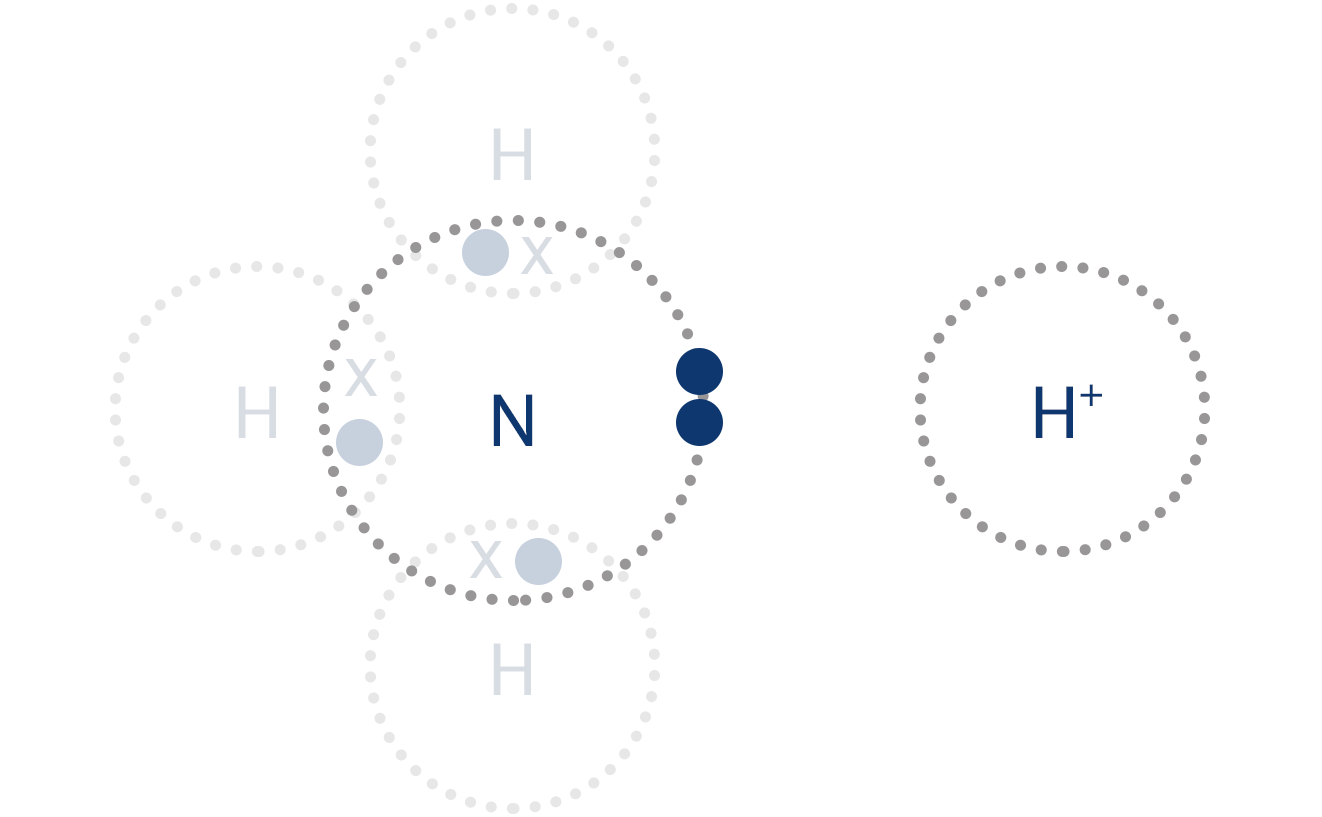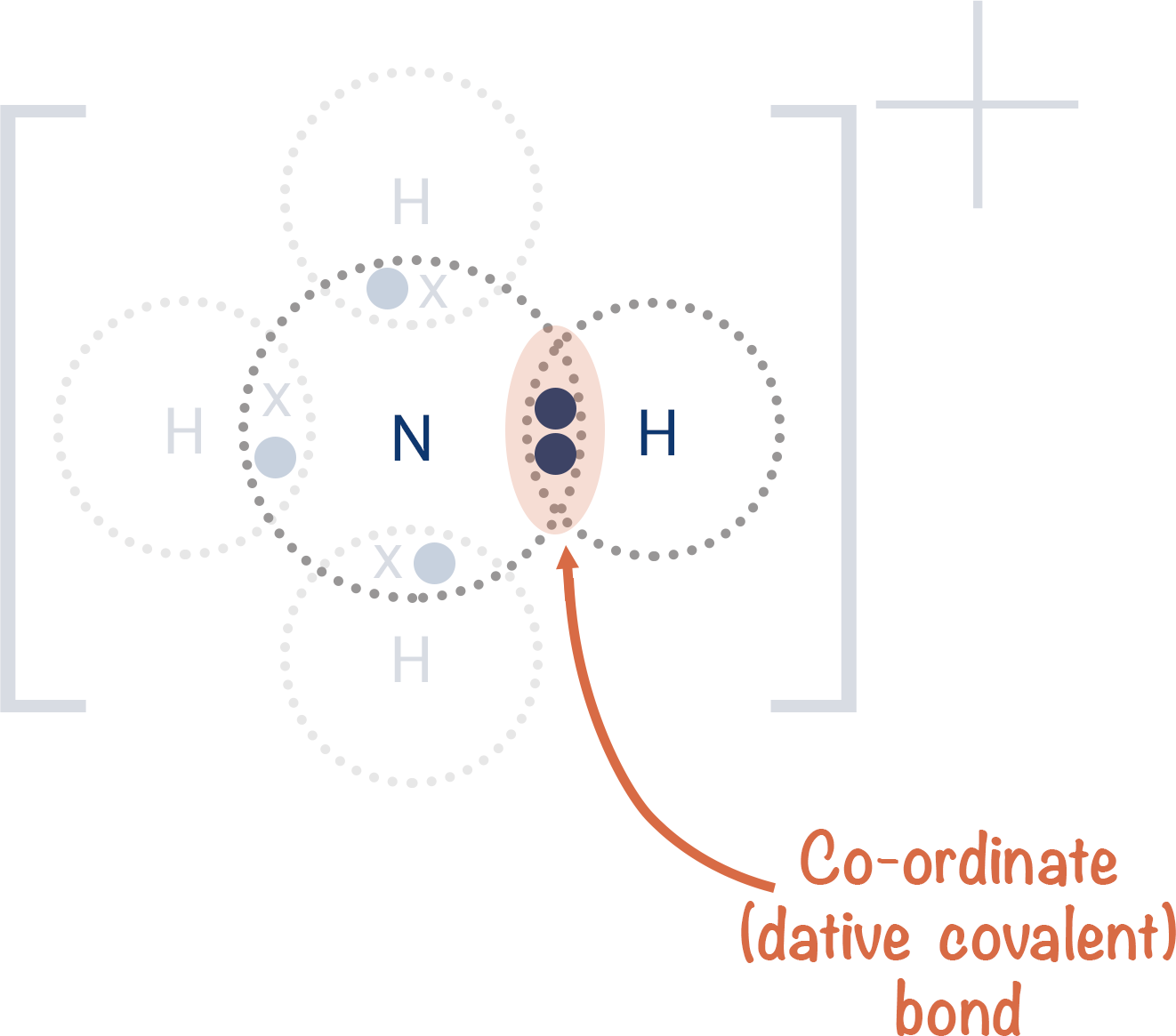Video Tutorial Co-ordinate (dative covalent) Bonding
Quick Notes Co-ordinate (dative covalent) Bonding
- A co-ordinate or 'dative covalent' bond is a covalent bond formed when one of the bonding atoms provides both the shared electrons in the bond.
- A full orbital with a lone pair of electrons from one atom will overlap with an empty orbital from another atom.
- As with a normal covalent bond, the pair of electrons will end up shared between the two atoms and the positively charged nuclei of both will be attracted to the shared electrons, pulling them closer together.
- Lewis (and dot and cross) diagrams can be used to show how a co-ordinate bond forms - an arrow is used to show the lone pair of electrons moving to form the co-ordinate bond between two atoms.
- Once formed, a co-ordinate bond is no different to any other covalent bond.

Full Notes Co-ordinate (dative covalent) Bonding
In a covalent bond, a pair of electrons is shared between two atoms. The positively charged nuclei of both atoms get attracted to the shared pair of negatively charged electrons and this pulls them closer together. Usually, each bonding atom provides one of the bonding electrons (from a half filled orbital).
Sometimes however, both the shared electrons in a covalent bond can come from one of the bonding atoms. This type of bond formation is called a 'co-ordinate' or 'dative covalent' bond.

A full orbital (with a lone pair of electrons in) from one atom will overlap with an empty orbital from another atom. The result is exactly the same as if two half filled orbitals had overlapped. Two orbitals from two atoms overlap and form a new bonding orbital that a pair of electrons is in. The nucleus of each atom is attracted to the shared electrons and this pulls the two atoms closer together, forming a covalent bond.
Example of Ammonia acting as a base (NH3 + H+)
The forming of an ammonium ion (NH+4) from ammonia (NH3) and a hydrogen ion (H+) is an example of co-ordinate bond formation.

In ammonia, there is a central nitrogen atom that has a lone pair of electrons. The lone pair of electrons occupy a 'full' orbital.
A H+ ion is formed from a hydrogen atom losing one electron. As a hydrogen atom is only made up of one proton and one electron to start with, a H+ ion is actually just a single proton. It still has the orbital around it that the electron was in, the orbital is now just empty.

When the full orbital with the lone pair in from the nitrogen gets close enough to the H+ ion, the full orbital and empty orbital from each overlap.

This creates a new bonding orbital where the pair of electrons is shared between the nitrogen and hydrogen - creating a covalent bond.
Dot and cross diagrams
Dot and cross diagrams can be used to show the formation of a co-ordinate bond.

An arrow is used to represent the movement of the lone pair of electrons being used to form the bond.
It is important to remember that there is actually no difference between a co-ordinate bond and 'normal' covalent bond once it has been formed. By using dot and cross diagrams, it is easier to see how electrons are shared around in molecules to form these types of bond.
We’ve launched our new site! 🎉
Course-specific notes with built-in search!
AP • A-Level (AQA • CIE • Edexcel • OCR) • IB • NCERT 11 + 12
over 750+ new pages and 3,500 images.
Visit the new homepage
